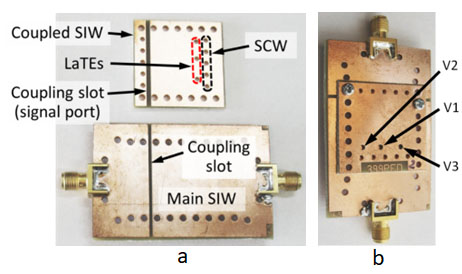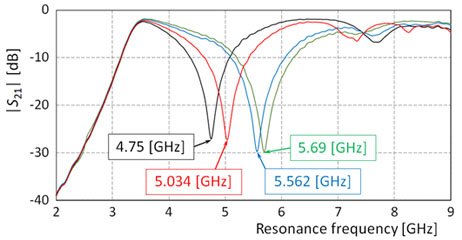Project title: Tunable RESOnant SENSors based on multi-layer substrate integrated waveguide technology
Acronym: ResoSens
Program: Information and Communication Technologies
Project category: Experimental-demonstrative
Contract No. 399PED/2019
Project duration: 2020 - 2022
ResoSens Results
V. Buiculescu, A. Baracu, C. Buiculescu, “Layout-based tuning solution for reconfigurable SIW resonant sensors”, 9th Electronics System-Integration Technology Conference – ESTC 2022, 13-16 Sept. 2022, Sibiu, Romania Abstract: Accelerated increase in the number of resonant sensors that must operate at close frequencies and in volume-constrained spaces makes decoding useful sensing information particularly difficult due to interference between their response signals. To address this concern, the paper presents a novel, flexible solution for modifying the operating frequency of substrate-integrated waveguide (SIW) resonant sensors. This feature allows fast and cost-effective frequency tuning of the SIW resonant sensors, in order to reduce the interferences. The rejection circuits can be also used to match the filters’ response to different radio standards. A test circuit with three layout tuning elements (LaTEs). i.e. metal-plated via holes, was used to test the novel electronic tuning solution. The circuit was fabricated as double-sided printed circuit board (PCB). The structure allowed 940 MHz frequency deviation, covered in eight discrete steps. The frequency deviation can be either increased or reduced by choosing different distances from the LaTE group and the shortcircuit termination of the resonant SIW circuit. |
Fig. 1. Configuration of the main and coupled SIW circuits (a); coding the layout tuning elements (LaTEs) V1 – V3 located near short-circuit termination (SCW) of the coupled SIW circuit (b). Usually, all LaTEs are active, i.e. they are plated with metal layers during SIW structure fabrication. If the metal layer is removed from a LaTE, it becomes an inactive element. The state of any LaTE can be modified during the resonant frequency adjustment procedure as follows:
In addition, this novel tuning concept can be used in harsh operating conditions, with mechanical shocks, vibrations and ionizing radiations, since it does not use semiconductor devices or moving mechanical parts.
Fig. 2. Resonant frequency variation of the resonant circuit in Fig. 1 for several combinations of tuning elements, shown on abscissa, inactivated by removing their inner metal layers. The maximum available frequency shift was 940 MHz, from 4.75 GHz to 5.69 GHz, for the current circuit configuration described above. However, this value can be either reduced or increased by choosing a different distance between the SCW and the LaTE group. Transfer characteristics corresponding to the same inactivated LaTEs used above are presented in Fig. 3.
Fig. 3. Measured transfer characteristics for inactivated tuning element combinations used in Fig. 2. |




